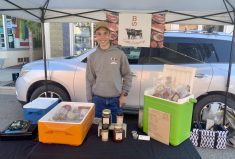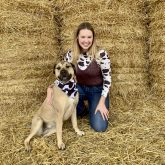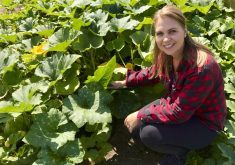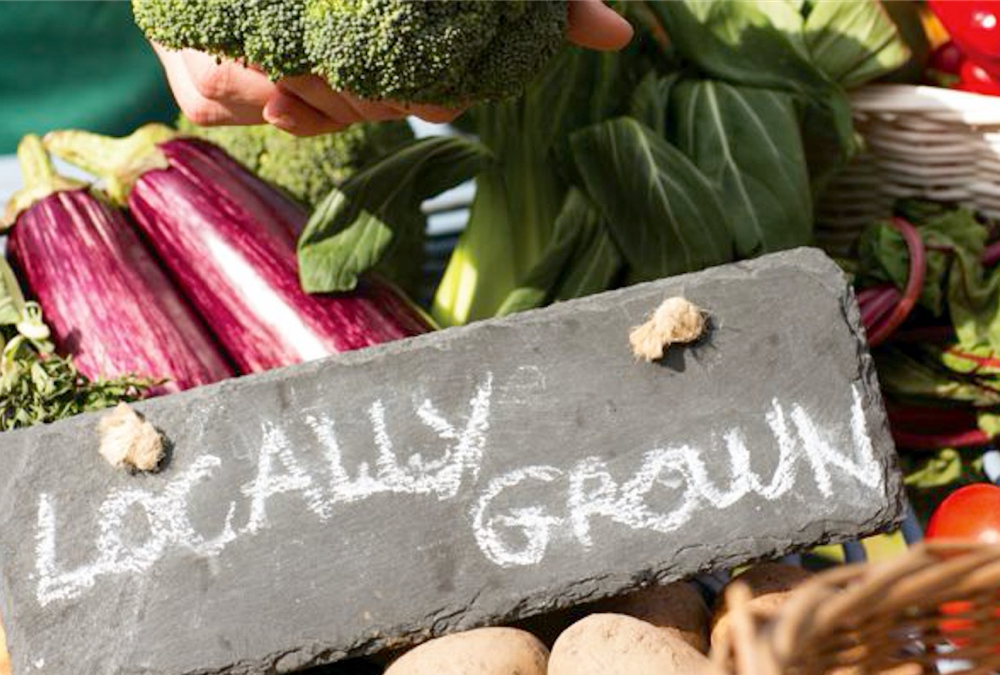Peter DenOudsten never intended to become a Piedmontese cattle producer when he bought a few cows in the late ’80s to graze off some grassland he couldn’t crop.
“I only had a few cows and it wasn’t worth having a bull around, so I just got Dad to artificially inseminate them with some beef semen he had,” said DenOudsten, who operates Peony Farms near Lacombe with wife, Emma and their three children.
“He used this breed called Piedmontese. It didn’t matter to me at the time. I figured I’d just check out what it was.
Read Also

Farming Smarter receives financial boost from Alberta government for potato research
Farming Smarter near Lethbridge got a boost to its research equipment, thanks to the Alberta government’s increase in funding for research associations.
“But the more I checked into it, the more I realized this is the beef of the future.”
DenOudsten started out with 10 embryos from a breeder in Saskatchewan, and “that went very well.” He bought another 10 embryos, and he’s been growing ever since, expanding into purebred Piedmontese breeding stock. Now, the DenOudsten family has approximately 150 purebred Piedmontese cows and bred heifers and a total herd of over 400 cows — the largest Piedmontese herd in Canada and the only one in Alberta.
“We raise breeding stock,” said DenOudsten. “We’ve been flushing our own high-end genetics and multiplying them that way, as well as natural births. The majority of the bulls gets sold into the U.S., because they have a very well-developed Piedmontese meat program down there.”
The Canadian meat program, on the other hand, hasn’t grown much since the breed was first introduced to Canada in 1980, and despite DenOudsten’s early predictions that Piedmontese was ‘the beef of the future,’ there are only around 30 Piedmontese cattle producers in Canada, more than half of which are in Quebec.
“When Piedmontese came into North America, it was just at the time when the grading system was changing to emphasize marbling. As a lean breed, the Piedmontese have a little bit of marbling, but not excess marbling,” said DenOudsten.
“So they weren’t attracting the premiums from the commodity market. There basically was no market where you could get a consistent premium on a Piedmontese animal. There just wasn’t an incentive for people to switch to Piedmontese.
“Over the last few years, the beef industry as a whole has gone very well, and when things are going very well, people are even more reluctant to change. We’re starting to see the shift, but people are very afraid of change.”
Yield advantage
But making the switch is starting to make good financial sense for producers. Piedmontese cattle are a double-muscled breed, so the animals consistently yield higher — without any added input costs.
“On a hanging weight compared to live weight, they’re probably about five per cent more yield,” said DenOudsten. “But the real gain is on salable cuts. That’s where you’re gaining on a five to seven per cent range. There is a lot more salable meat on a Piedmontese animal compared to an Angus.”
Most producers shy away from double-muscled breeds because of calving problems associated with a larger birth weight, but Piedmontese cattle are born without double muscling, only developing it one to three months after birth.
“The Piedmontese don’t develop the double muscling until after they’re born, and they’re also a fine-boned animal, so the calves are long and slender when they’re born. When you use them as a terminal cross, it’s very easy calving.”
For that reason, the breed works best as a “terminal sire,” said DenOudsten.
“All you have to do is use a Piedmontese bull on a cow herd that works well in your environment and you get this marked increase in salable meat,” he said. “If they get crossed with a British breed, they marble very well, but if they get crossed with a leaner continental breed, they don’t express very much marbling.”
But even without the marbling, Piedmontese are “consistently tender,” thanks to an inactive myostatin gene that increases muscularity and tenderness while reducing the fat content in the beef.
“Piedmontese consistently have more meat, but they’re also consistently tender,” said DenOudsten.
“We’ve actually slaughtered a 10-year-old cow, and the butcher was just amazed — ‘What do you mean it’s 10 years old?’
Customers ‘for life’
“It’s very useful in marketing, because people have the same eating experience every time.”
The DenOudstens have partnered with Messinger Meats, a meat processor and butcher shop in Mirror, to market the beef, primarily in the Italian centres in Calgary and Edmonton and Sinnott’s Independent Grocer in Red Deer. So far, demand has kept pace with supply.
“Since we’ve partnered with Messinger Meats, it’s been able to market everything we could produce,” said DenOudsten, adding that the premium he receives for his beef is “well above” commodity market prices.
“At this point in time, we’re slaughtering five to six animals a week. That’s enough to supply those existing markets right now.”
But the DenOudstens are looking ahead to future growth as demand starts to outstrip supply.
“It’s a problem of trying to get enough supply. In the cattle business, if you decide you want more production, we’re talking a 2-1/2-year process before you actually have product available,” he said.
“We’re beginning now to try and partner with local farmers to use our Piedmontese bulls on their cows so we can buy their calves back, run them through our feedlot, and have more meat available to sell into these markets.
“We have expanded the cow herd and we’re growing as the market grows.”
That market growth is a result of several recent consumer trends, he said.
“Aside from wanting excellent quality every time, there’s a trend toward local food and a trend toward healthier eating, which the Piedmontese falls under,” said DenOudsten, adding that Piedmontese beef have fewer calories, higher protein, and more healthy omega-3 fatty acids than commercial beef.
His Piedmontese cattle are also raised ‘naturally,’ without antibiotics or additional hormones, and come with a strict traceability program that customers appreciate.
“It’s a combination of all these factors together that has contributed to the growth of this program.”
And while the jury is still out on whether Piedmontese will be the ‘beef of the future,’ the breed has a huge growth opportunity in Canada, said DenOudsten.
“People are looking to source healthy food, and if you can have an extremely high-quality eating experience at the same time, once you have a customer, you’ve got them for life.”















